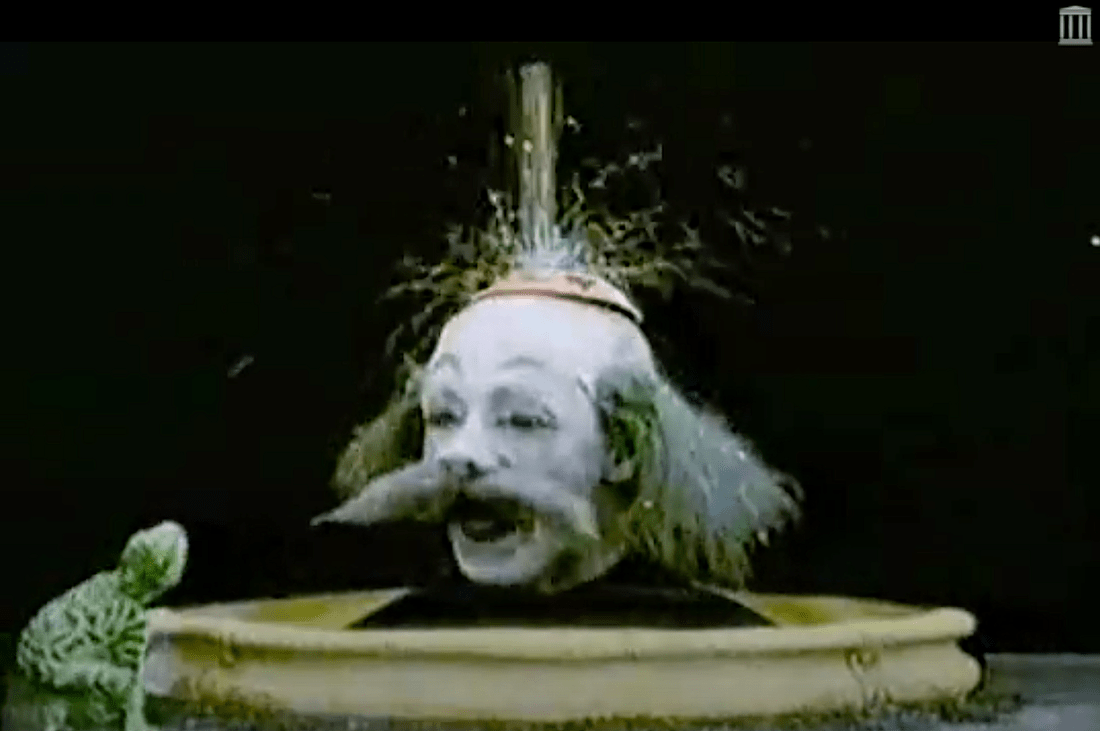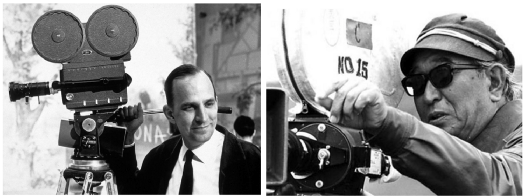
Hitchcock often made realism and plausibility a priority in his films. Movies like Rope, Strangers on a Train, and Psycho were meant to be seen as events that could happen in real life. Psycho featured the first shot of a toilet on film and a POV shot looking into a showerhead. These were efforts to reproduce our ordinary world with recognizable and familiar details. It helped set the audience up for when that ordinary world was disrupted by something shocking.
To Catch a Thief has none of these “realistic” aspects. The scene where Carry Grant and Grace Kelly rendezvous in her hotel room is completely contrived and artificial. The dialogue, the blocking, the chiaroscuro green lighting, and the quiet fireworks exploding just outside her window create a thoroughly Hollywood sense of glamour. Then add Grace Kelly in an angelic white but very sexy gown, and Carry Grant in his fitted tuxedo and the alluring fantasy tableaux is complete.
When pursuing realism a filmmaker has constraints. Everything needs to be measured against the shared experience of real life. Once realistic characters are placed in a realistic situation there are limits as to what can happen. Often writers speak of stories “writing themselves” in that, once everything is set in place the force of realism drives the story forward. In this regard leaving realism behind and embracing artifice gives the author more freedom and a wider range of choices. If the world they are depicting is already set apart from our own it allows the behavior and events that are depicted a special latitude.
In To Catch A Thief we enter an elegant, romantic world of rich beauty queens and suave rascals galavanting in the sunshine of the French Riviera. No toilets, or gritty gas stations here. The fireworks scene in the hotel might as well take place in a dream. Every aspect is romanticized, heightened, and otherworldly. It all sets the stage for a delicate mouse and cat game where the mouse tries to turn the tables on the cat.
Grace Kelly plays Francis who has correctly surmised that John, played by Carry Grant, is actually a famous jewel thief. What she has not surmised is that he has no connection to the string of robberies occurring on the Rivera. She thinks she has him cornered and so invites him to her room to needle the truth out of him. Like her dress, she is a delicate balance between innocent and alluring. She is naive but not about everything.
This was Hitchcock’s first use of Paramount’s new widescreen system Vistavision. It provided him enough room to construct separate and independent spheres for each of the two characters to operate in. Hitchcock could highlight their separation as John is slowly drawn over to Francis’ side of the screen.

Positioned between them on this wide Mise-en-scène are the fireworks which provide a flexible metaphor for their conversation, their attraction, their conflict, and the building sexual tension. The aural is recapitulated in the visual.
The dialogue between the two characters is a clever series of double entendres designed to confuse both John as well as the viewer as to whether Francis is talking about John’s desire for her or for the glittering diamonds around her neck. The chiaroscuro reflects this beautifully as the jewels and her glowing face trade places in the light.

Frances: “If you want to see the fireworks, it’s better with the lights out. (pause) You’re going to see one of the Riviera’s most fascinating sights (brief pause) I was talking about the fireworks.“
John: “I never doubted it.”
…
Frances: “ Aren’t you nervous to be in a room with diamonds, unable to touch them?
John: “No.”
John is unfazed by Frances’ trap or at least one of her traps. He won’t fall for the diamonds, but the fireworks both heighten the sexual tension and foreshadow’ its satisfaction.
Frances: “Look, John. Hold them.”
The use of the plural is almost lurid as she leans forward. She goes even further,
Frances: “Even in this light I can tell where you’re looking, Look, John. Hold them.”

As the two of them draw closer on the couch they continue their banter and Hitchcock quickens the pace by crosscutting more frequently to the exploding fireworks outside. The camera moves closer and begins to spin into position over John’s shoulder until he provides a small concession, a tiny a hint that he is who she thinks he is,
John: “You know as well as I do this necklace is imitation.”
And with that, the double entendre ends as they lean in to kiss and Francis says, “Well, I’m not.”

If you enjoyed this article click here for more
www.filmofileshideout.com/archives/lifeboat-is-not-like-other-hitchcock-films



